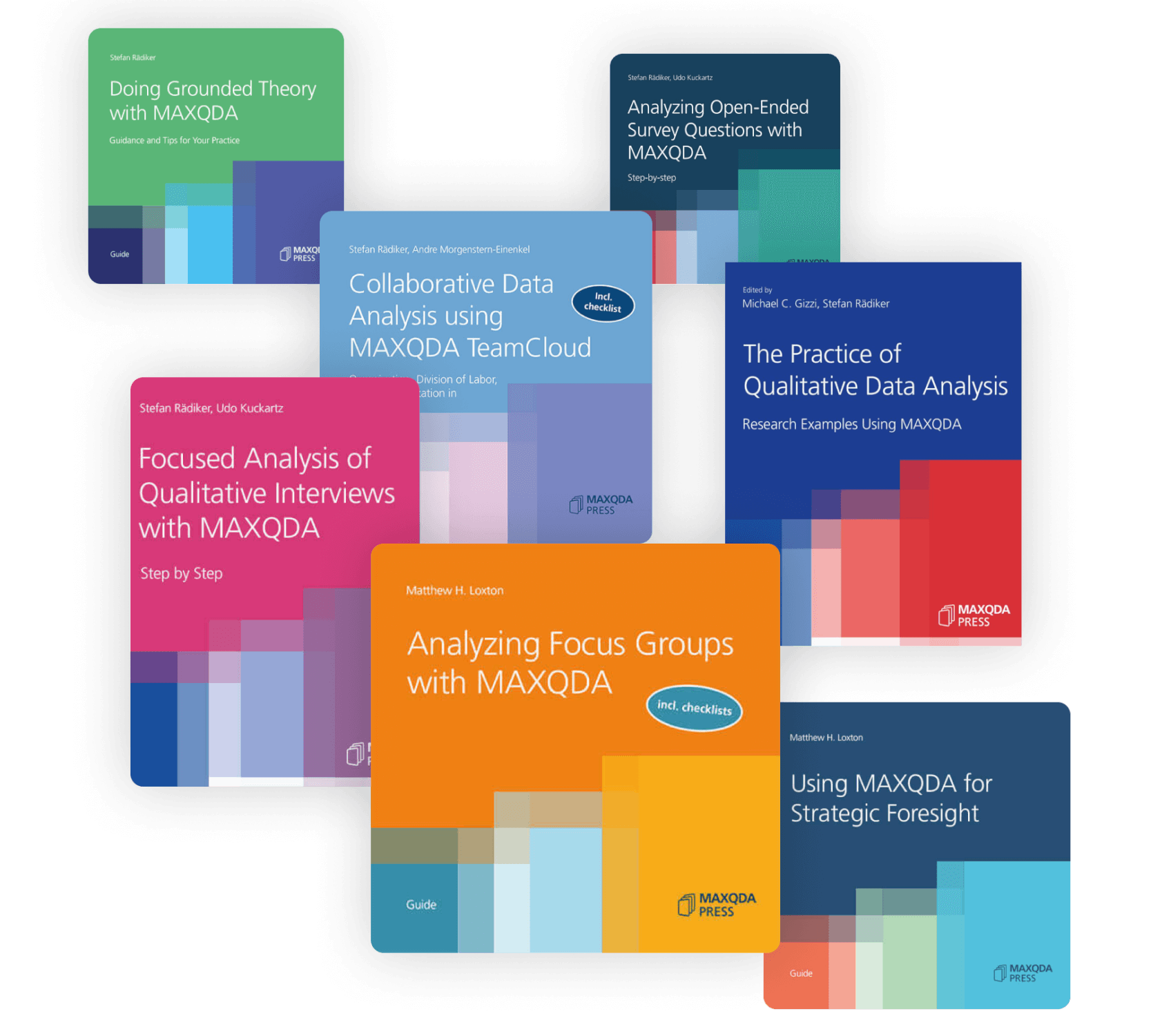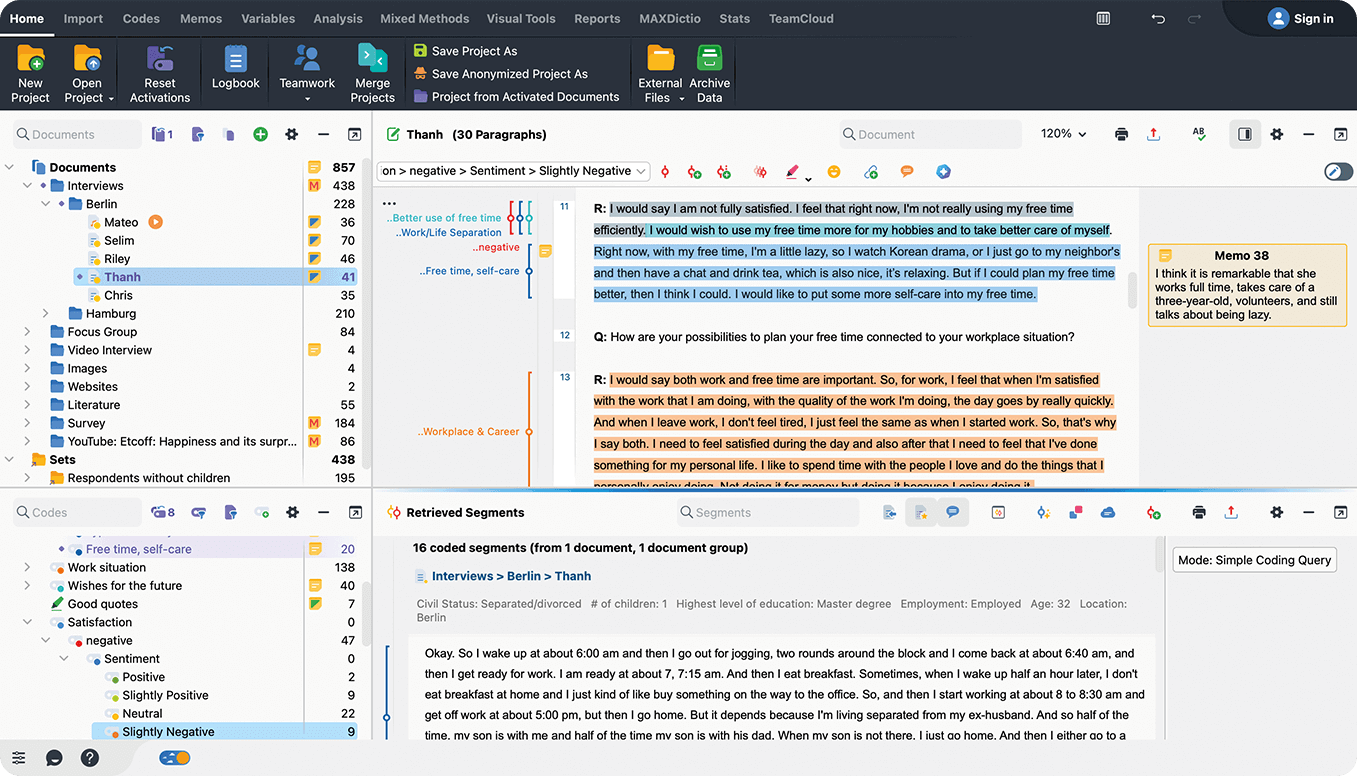The #1 content analysis software with the best AI integration
MAXQDA streamlines your content analysis with powerful analysis tools, ease of use, and smart AI integration. Explore the possibilities now.
Unlock the full potential of your qualitative research with the leading Content Analysis Software
MAXQDA is the most user-friendly choice for your content analysis needs and is considered as one of the best content analysis software. It is designed to work with a wide range of data types, including text, audio, and video, and offers a variety of powerful tools for content analysis. Whether you’re looking to code and classify data, visualize patterns and themes, or perform mixed-methods, or quantitative content analysis, MAXQDA makes it easy to get the insights you need for your content analysis.
Your data
Your codes
Document viewer
Your analysis
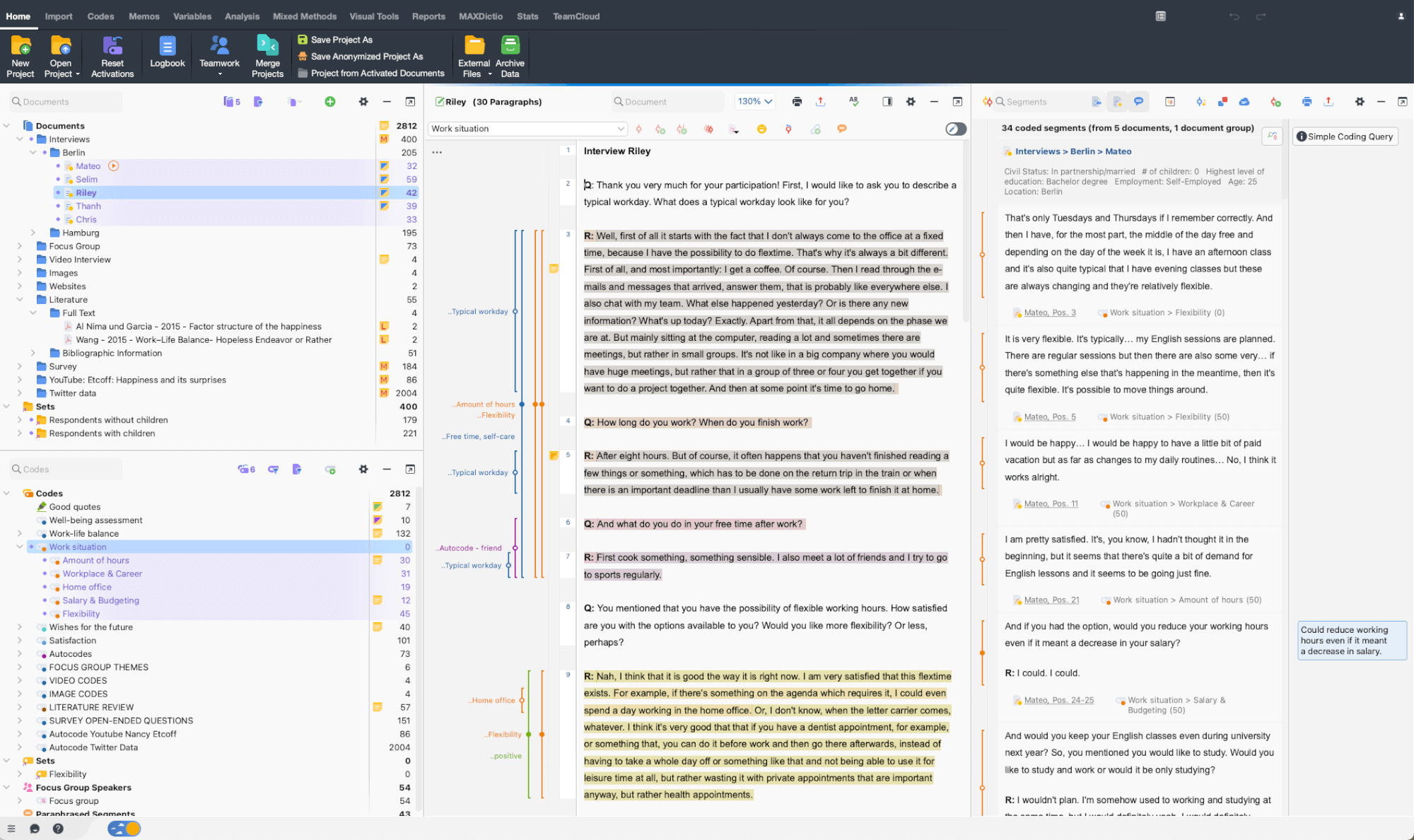
All-in-one Content Analysis Software
developed by and for researchers
MAXQDA is the ultimate software solution for managing and analyzing your content analysis projects. Crafted by and for researchers, it provides a diverse array of robust tools for project management, data analysis, and team collaboration. Its intuitive interface, accompanied by detailed tutorials and extensive documentation, makes it an ideal choice for both seasoned and novice content analysts. MAXQDA simplifies the content analysis process, allowing you to dedicate more time to interpreting and comprehending your data, instead of grappling with intricate software.
Developed by and for researchers – since 1989








Having used several qualitative data analysis software programs, there is no doubt in my mind that MAXQDA has advantages over all the others. In addition to its remarkable analytical features for harnessing data, MAXQDA’s stellar customer service, online tutorials, and global learning community make it a user friendly and top-notch product.
Sally S. Cohen – NYU Rory Meyers College of Nursing
Content Analysis is Faster and Smarter with MAXQDA
MAXQDA makes qualitative content analysis faster and easier than ever before. Analyze all kinds of data – from texts to images and audio/video files, websites, tweets, focus group discussions, survey responses, and much more. MAXQDA is at once powerful and easy-to-use, innovative and user-friendly, as well as the only leading content analysis software that is 100% identical on Windows and Mac.
All-in-one Content Analysis Software
As your all-in-one Content Analysis Software, MAXQDA can be used to manage your entire research project. Easily import a wide range of data types such as texts, interviews, focus groups, PDFs, web pages, spreadsheets, articles, e-books, bibliographic data, videos, audio files, and even social media data. Organize your data in groups, link relevant quotes to each other, use MAXQDA’s powerful tools designed to facilitate your content analysis, and share and compare work with your team members. Your project file stays flexible and you can expand and refine your category system as you go.
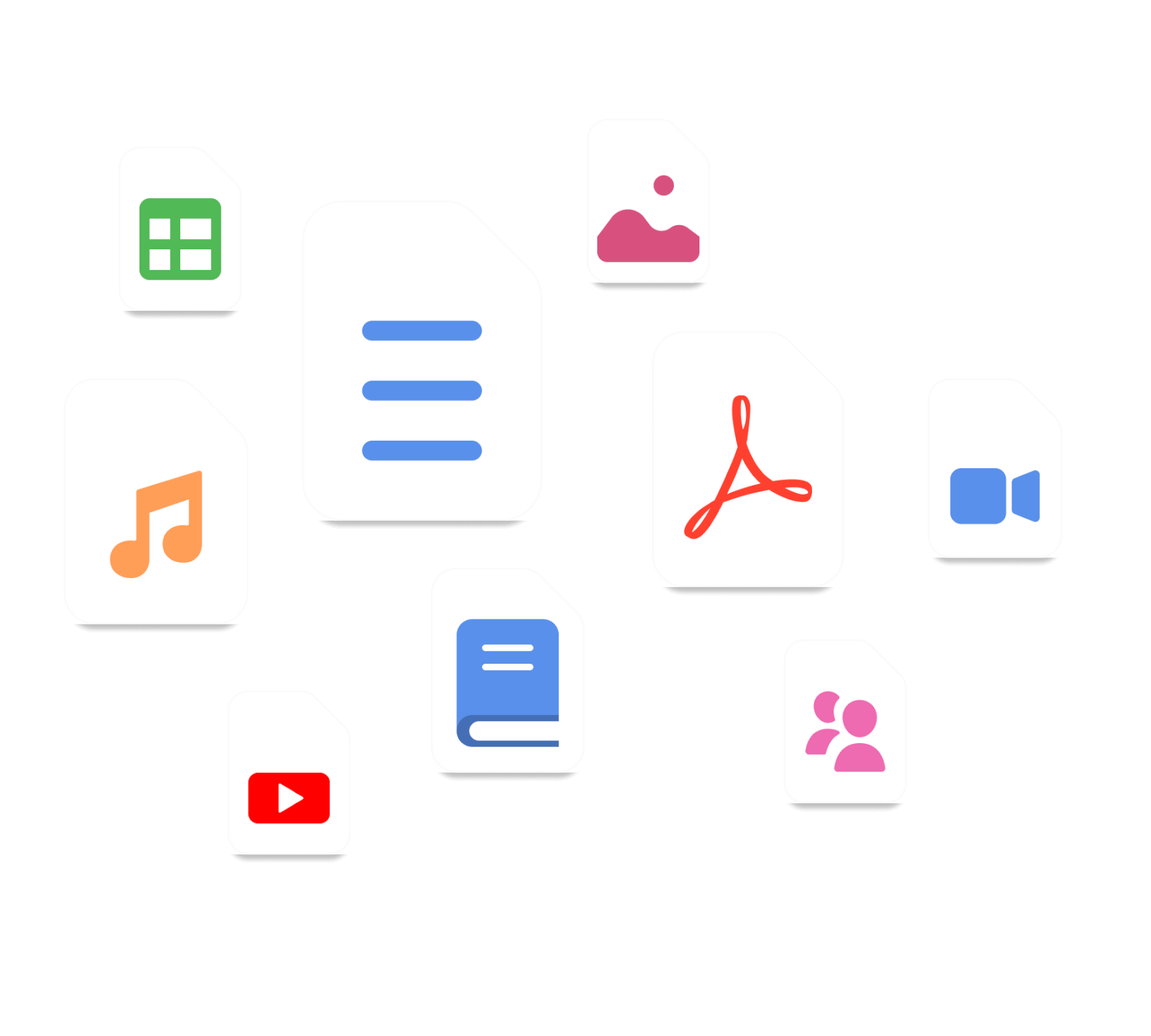
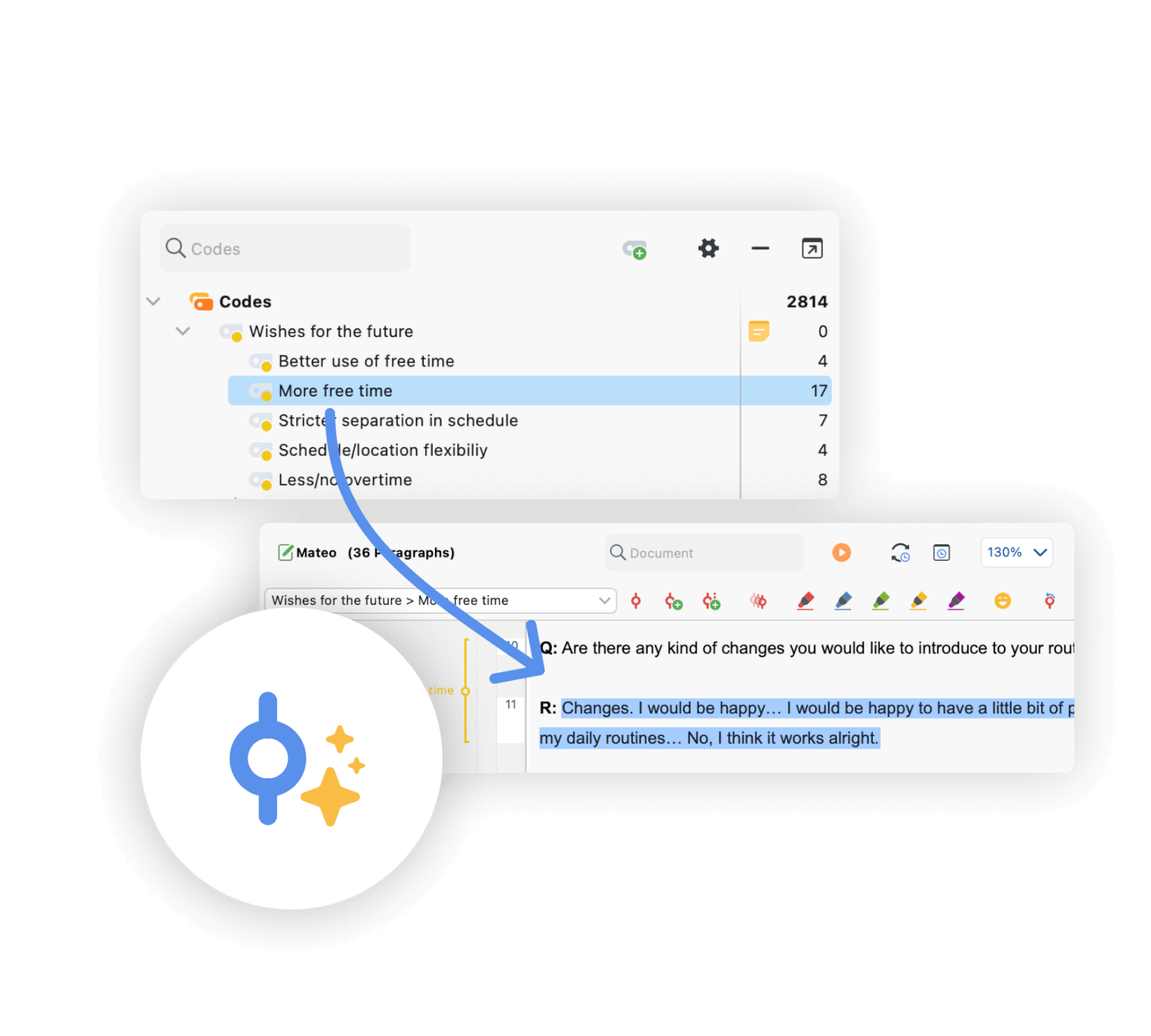
Code and retrieve
MAXQDA is a Content Analysis Software that is easy-to-use and can be used to mark important information in your data with different codes, colors, symbols, and emoticons. Because time is precious, you can create codes with just one click and apply them to your data quickly via drag & drop. MAXQDA as the #1 Content Analysis Software offers Text Search tools that allow you to explore your material without coding or reading them first. Search for keywords and automatically code them with just a few clicks. Organize your thoughts and theories in memos that can be linked to any element of your project. Retrieve your coded segments with one click or use MAXQDA’s powerful summary tools to test and develop new theories.
Find connections in your data
Researchers all around the world use MAXQDA as their Content Analysis Software because MAXQDA tools enable you to find connections in your data. MAXQDA’s activation system is surprisingly simple and easy to use. Using MAXQDA’s activation system you can precisely define what data segments in which documents you want to retrieve. Thanks to the interactive connection between your retrieved segments and your MAXQDA data, you can easily explore the segment’s context when needed. But there’s more that meets the eye: our advanced retrieval gives you a total of 9 further options for finding connections in your data, such as data segments with overlapping or intersecting codes. This allows you to tailor the retrieval to your needs.
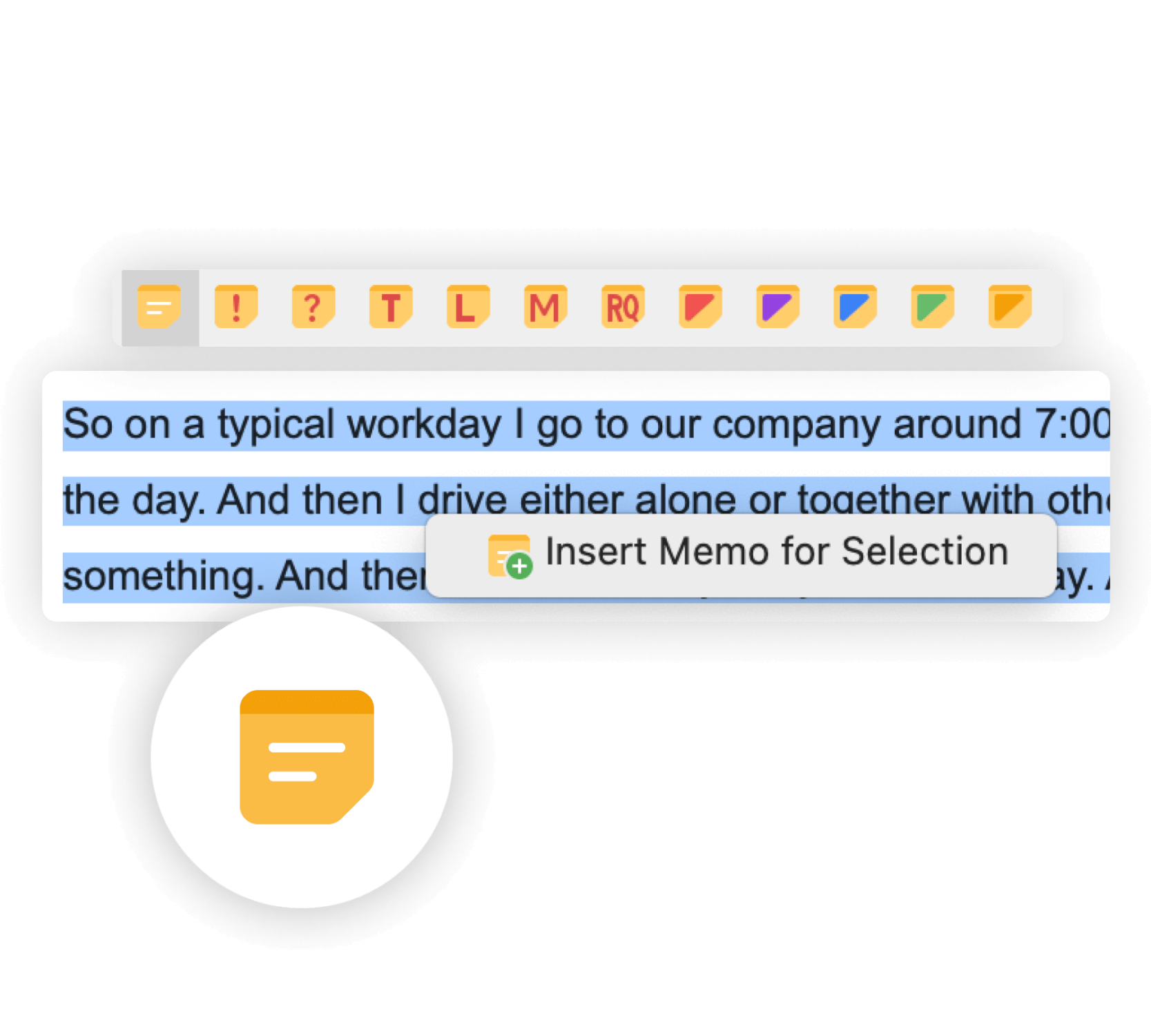
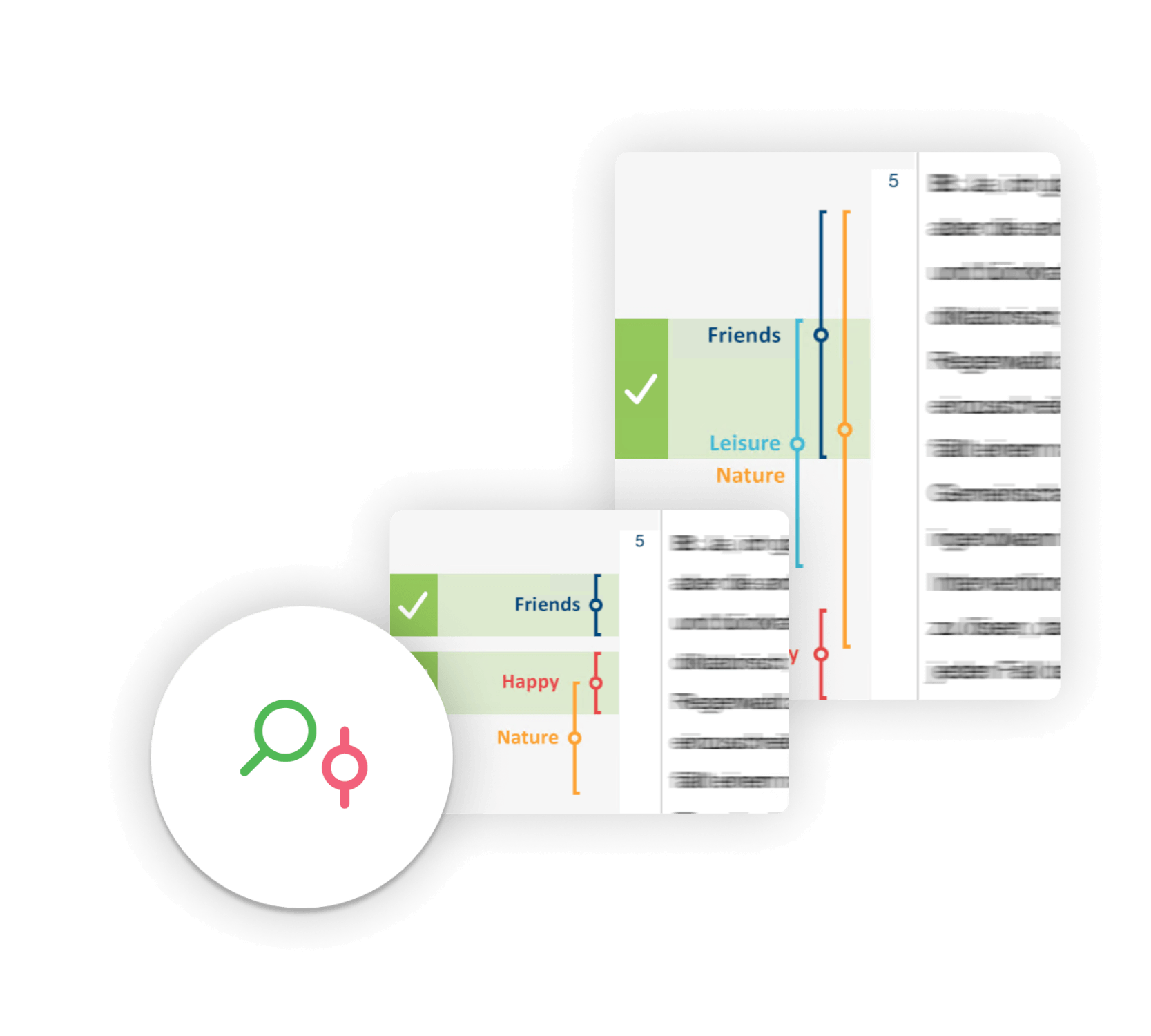
Advanced search functions
When performing content analysis, you might want to analyze a large amount of text which can be time-consuming and overwhelming. Luckily Content Analysis Software like MAXQDA can help. Search for keywords (and even entire dictionaries of keywords) in your data, memos, comments, paraphrases, and coded segments, and automatically code them with just a few clicks. Make use of the advanced search functions that offer you everything you might expect from professional Content Analysis Software – and with the integration of retrieval and lemma functions, Boolean operators, and wildcards, probably a little more.
Summarize your content analysis
A content analysis can be overwhelming, but with MAXQDA as your Content Analysis Software, you have an easy-to-use solution. Among other tools, MAXQDA’s overview and summary tables are especially useful for aggregating your content analysis results. MAXQDA offers overview tables for almost everything, codes, memos, coded segments, links, and so on. Use our summary grids and summary tables to keep summaries of which codes and variables appear in each respective project or document: another level of analysis that means you’ll never lose track of the bigger picture. Of course, you can easily export your overview and summary tables and integrate them into your publication.
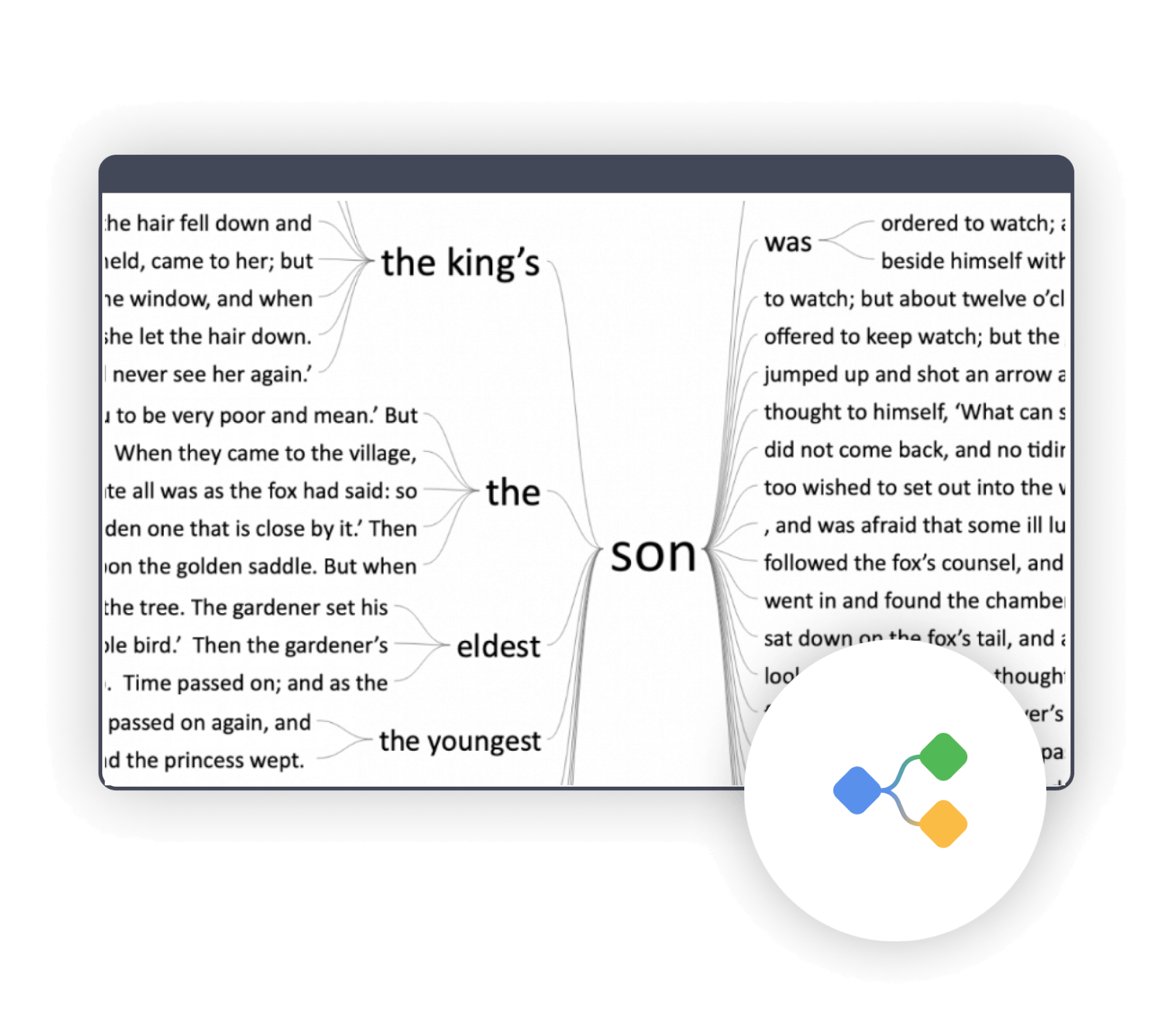
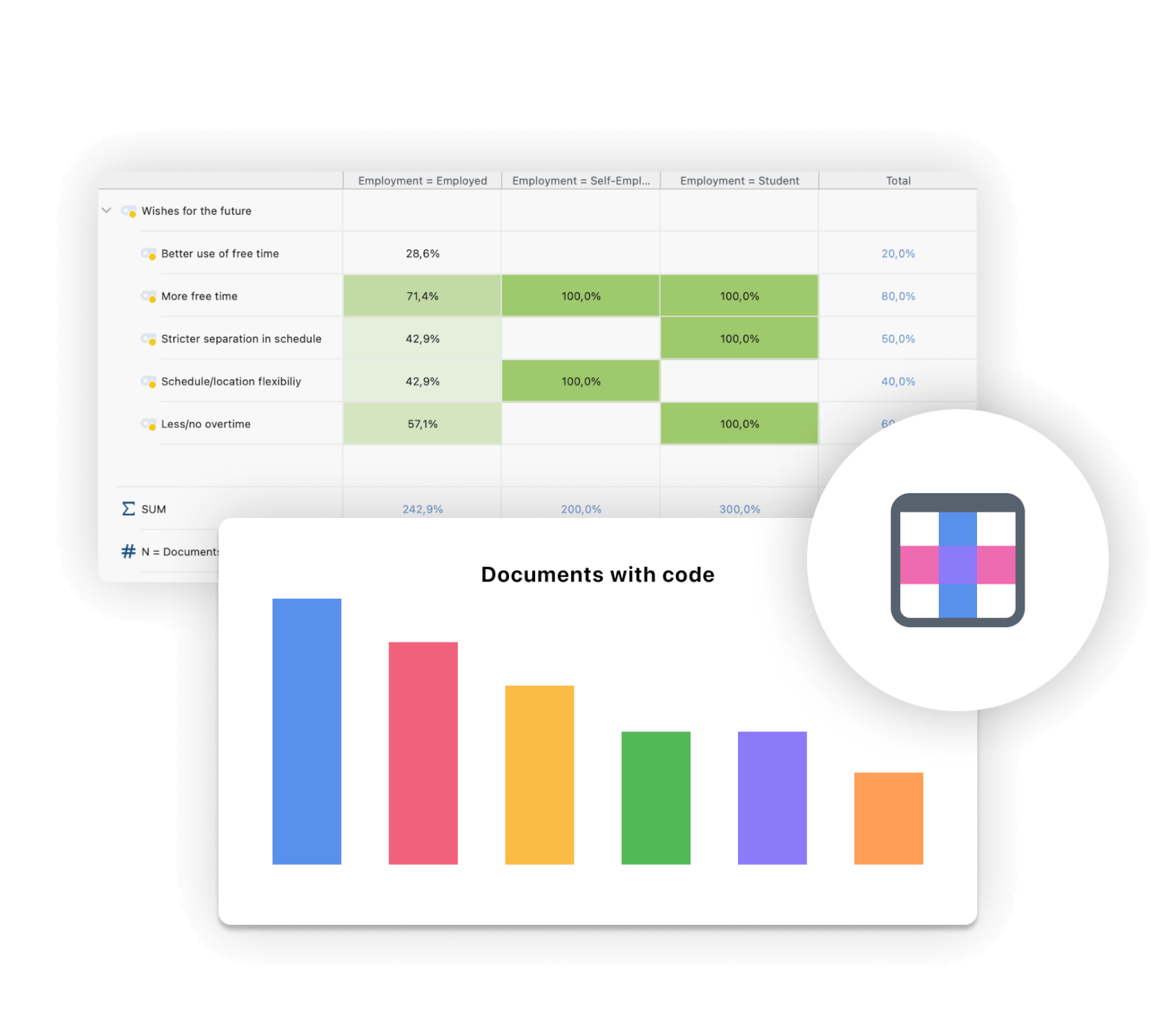
Quantitative Content Analysis
Quantitative content analysis is a method used by researchers all around the world. Because MAXQDA is a Content Analysis Software designed by and for researchers, it offers an entire add-on module with tools specifically designed to facilitate quantitative content analyses. Included are tools for word frequency analysis, visual text exploration, content analysis, vocabulary analysis, dictionary-based analysis, and more that facilitate the quantitative analysis of terms and their semantic contexts. You can display frequencies of individual words or word combinations in tables or visualize them in the Interactive Wordtree, use the Keyword-in-Context function to transfer the textual contexts of selected words into a clear table, and much more.
Visualize your qualitative data
As an all-in-one Content Analysis Software, MAXQDA offers a variety of visual tools that are tailor-made for qualitative research and content analyses. Create stunning visualizations to analyze your material. Of course, you can export your visualizations in various formats to enrich your final report. Visualize the progression of an interview with the Codeline, use the Code Cloud to illustrate and explore your categories, or make use of the graphical representation possibilities of MAXMaps, which in particular permit the creation of concept maps. Thanks to the interactive connection between your visualizations with your MAXQDA data, you’ll never lose sight of the big picture.
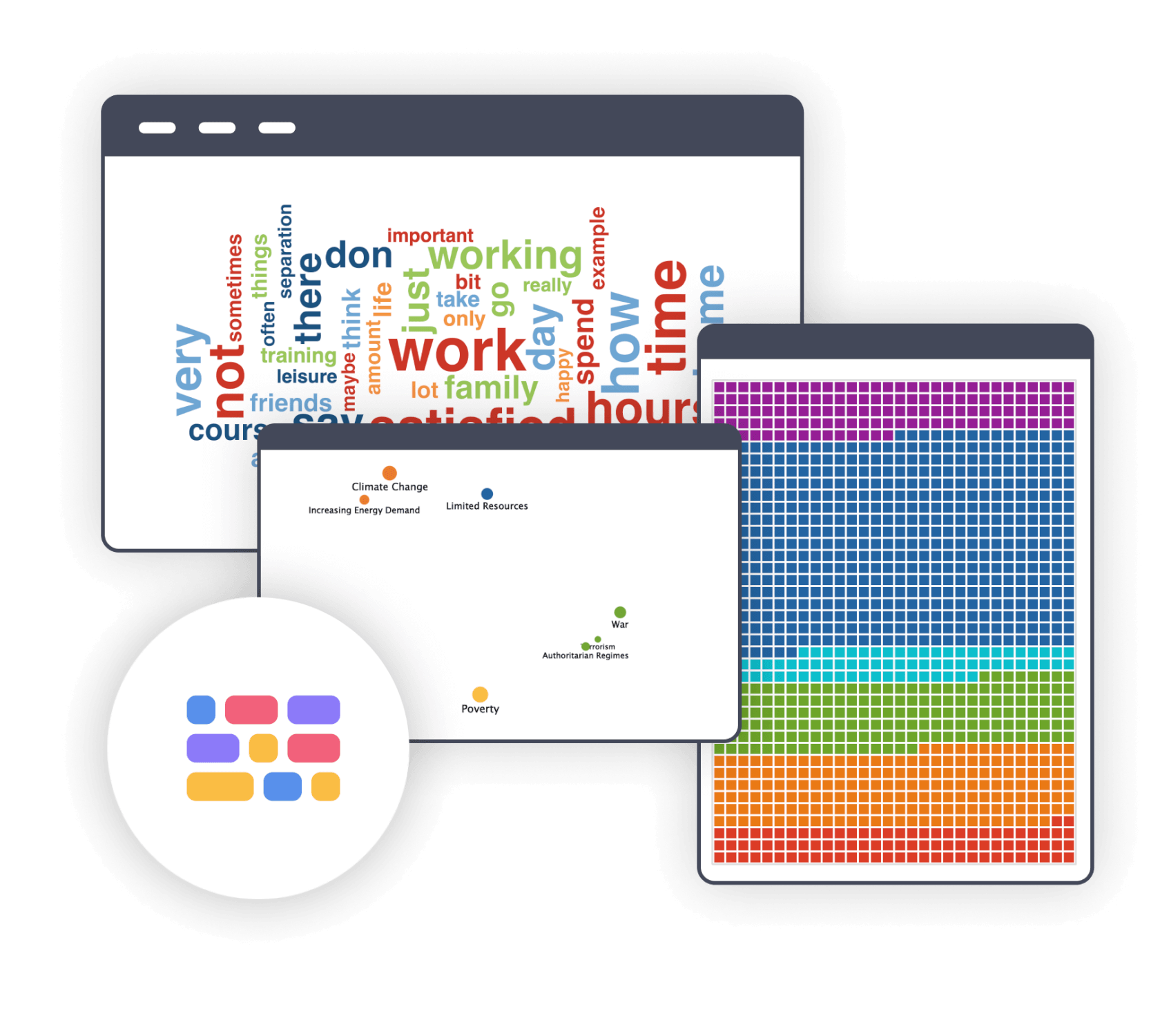
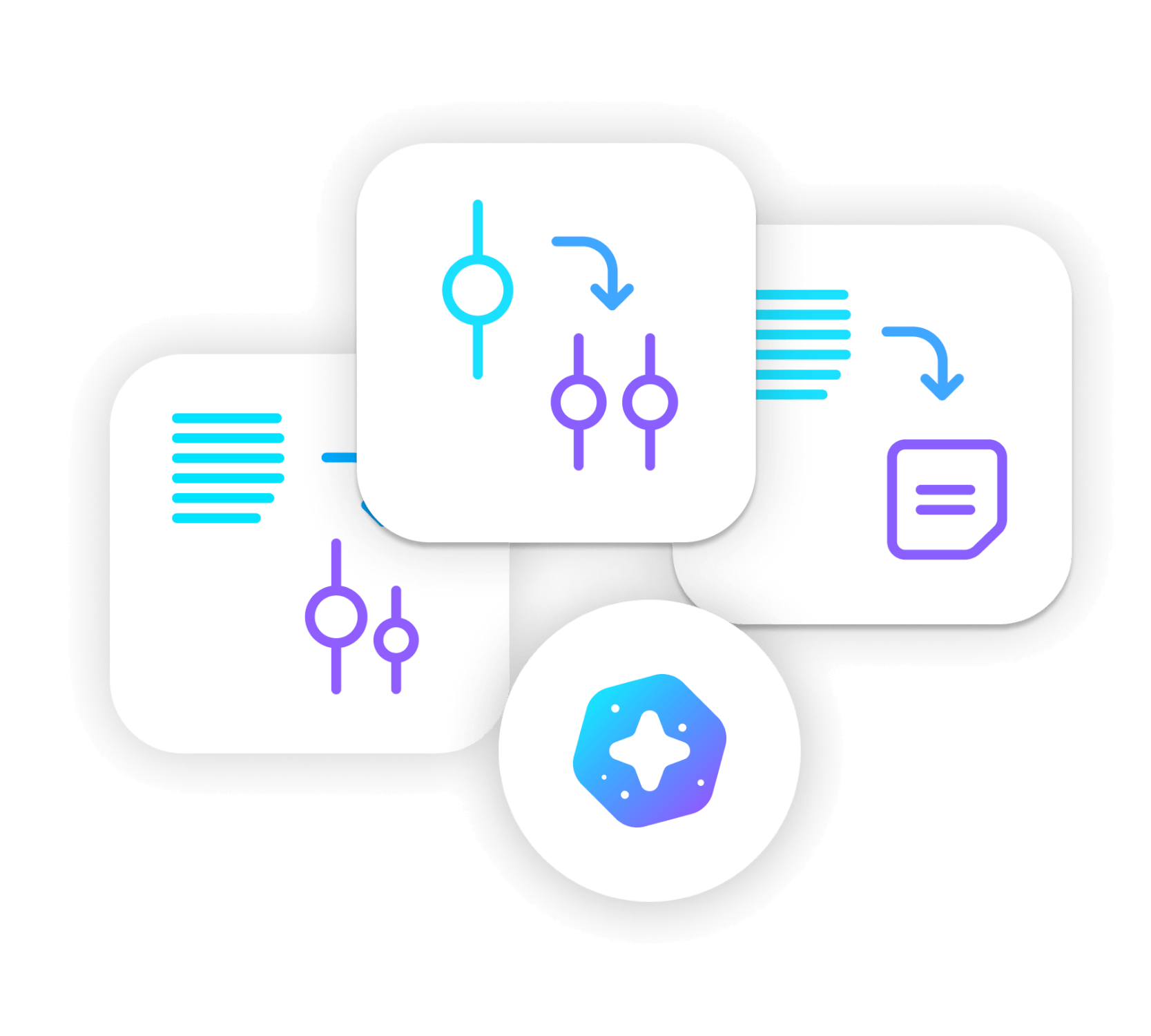
AI Assist: Content analysis software meets AI
AI Assist – your virtual research assistant – supports your work with various tools. Besides automatic transcription of audio and video recordings in different languages, AI Assist simplifies your work by automatically analyzing and summarizing elements of your research project and by generating suggestions for subcodes. No matter which AI tool you use – you can customize your results to suit your needs.
Free tutorials and guides on content analysis software
MAXQDA offers a variety of free learning resources for content analysis, making it easy for both beginners and advanced users to learn how to use the content analysis software. From free video tutorials and webinars to step-by-step guides and sample projects, these resources provide a wealth of information to help you understand the features and functionality of MAXQDA for content analysis. For beginners, the software’s user-friendly interface and comprehensive help center make it easy to get started with your data analysis, while advanced users will appreciate the detailed guides and tutorials that cover more complex features and techniques. Whether you’re just starting out or are an experienced researcher, MAXQDA’s free learning resources will help you get the most out of your qualitative content analysis software.
